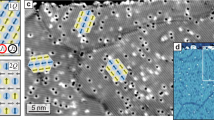
Overview
- Presents the theoretical foundations for developing magnetoresistive memory
- Includes the phenomenon of the superparamagnetic threshold
- Highlights the frustrations of the exchange action, taking into account the compensated and uncompensated cross section
Part of the book series: Springer Aerospace Technology (SAT)
Access this book
Tax calculation will be finalised at checkout
Other ways to access
About this book
This book presents relevant issues for the development of computer technology in general and civil aviation in particular, related to the promising task of developing magnetoresistive memory. In modern conditions of constantly increasing air traffic intensity, it is necessary to use both on board the aircraft and in ground services computing devices that guarantee the required level of flight safety. The book shows that in the multilayer ferromagnet-antiferromagnet system, the behavior of magnetic parameters in layers of nanometer thickness is largely determined by frustrations. The monograph provides not only a complete analysis of the current state of magnetic nanostructures but also predicts new types generated by exchange interaction frustrations. The phase diagrams "layer thickness (layers)—roughness" of a thin ferromagnetic film on an antiferromagnetic substrate and a spin-valve system ferromagnet-antiferromagnet-ferromagnet are constructed taking into account the energy of single-ion anisotropy. The book presents experimental results that confirm the existence of a new type of domain walls. It is shown that the detected domain walls appear exactly at the locations of the atomic steps, and their thickness increases in proportion to the film thickness with a proportionality coefficient of the order of one. Special attention using mathematical models is placed for optimal orientation of spins at a smooth interface in the case of a compensated cross section of an antiferromagnet and an uncompensated cross section. The constructed phase diagrams and models are compared with the experiments. It is thus concluded that scanning tunneling microscopy (STM) makes it possible to study domain walls generated by frustration on the surface of the structure.
Similar content being viewed by others
Table of contents (8 chapters)
-
Front Matter
-
Back Matter
Authors and Affiliations
About the author
Alexander S. Sigov is an academician of the Russian Academy of Sciences and the author of more than 300 scientific papers. He has delivered more than 40 invited lectures at Russian national conferences and more than 30 invited lectures at world range International conferences, symposia, and workshops.
Accessibility Information
PDF accessibility summary
This PDF does not fully comply with PDF/UA standards, but does feature limited screen reader support, described non-text content (images, graphs), bookmarks for easy navigation and searchable, selectable text. Users of assistive technologies may experience difficulty navigating or interpreting content in this document. We recognize the importance of accessibility, and we welcome queries about accessibility for any of our products. If you have a question or an access need, please get in touch with us at accessibilitysupport@springernature.com.
EPUB accessibility summary
This ebook is designed with accessibility in mind, aiming to meet the ePub Accessibility 1.0 AA and WCAG 2.0 Level AA standards. Its features include described images and other non-text content, screenreader-friendly navigation and accessible math. Math is represented either as MathML, LaTeX or in images. If math is represented as image, Alt Text might not be present. We recognize the importance of accessibility, and we welcome queries about accessibility for any of our products. If you have a question or an access need, please get in touch with us at accessibilitysupport@springernature.com.
Bibliographic Information
Book Title: Multilayer Magnetic Nanostructures
Book Subtitle: Properties and Applications
Authors: Alexander S. Sigov
Series Title: Springer Aerospace Technology
DOI: https://doi.org/10.1007/978-981-19-6246-2
Publisher: Springer Singapore
eBook Packages: Physics and Astronomy, Physics and Astronomy (R0)
Copyright Information: The Editor(s) (if applicable) and The Author(s), under exclusive license to Springer Nature Singapore Pte Ltd. 2023
Hardcover ISBN: 978-981-19-6245-5Published: 14 June 2023
Softcover ISBN: 978-981-19-6248-6Published: 15 June 2024
eBook ISBN: 978-981-19-6246-2Published: 13 June 2023
Series ISSN: 1869-1730
Series E-ISSN: 1869-1749
Edition Number: 1
Number of Pages: XI, 137
Number of Illustrations: 64 b/w illustrations, 14 illustrations in colour
Topics: Condensed Matter Physics, Chemistry/Food Science, general, Aerospace Technology and Astronautics, Analytical Chemistry, Materials Science, general, Electronic Circuits and Devices



